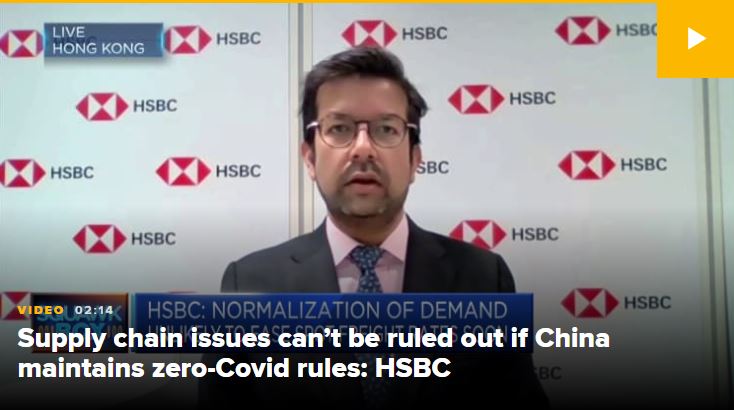China’s zero-Covid restrictions will impact global supply chain recovery as any small disruption in the country will likely lead to “ripple effects” across the world, according to the head of shipping at HSBC. The pandemic has revealed “how lean the supply chain has become. And there is little margin of error,” said Parash Jain, global head of shipping and ports equity research at HSBC.
“The sheer importance of China when it comes to global trade means that any small disruption in China, will have a ripple effect across the supply chain,” Jain told CNBC’s “Squawk Box Asia” on Monday. China, the world’s second largest economy, has doubled down on its zero-Covid strategy due to recent spikes in infections across the country. Covid cases have been reported in the key port cities of Shenzhen, Tianjin and Ningbo, as well as the industrial hub of Xi’an, resulting in lockdowns and curbs in the largest port hubs.
China reported 58 new Covid-19 cases as of Monday, according to the national health authority. The National Health Commission in its daily update said 40 of the new cases were local infections, with the remaining 18 coming from overseas. Despite having a relatively low number of cases compared to many other places in Asia, Beijing has clung onto its zero-Covid approach. China has a 7-day rolling average of 0.04 daily cases per million people as of Jan. 30 compared with 568.8 for Japan, 290.41 for South Korea and 180.35 for India, according to Our World in Data.
China has the infrastructure in place to quickly decongest — whether it’s at the port or in the supply chain side, said Jain. “However, the chaos created because of this will eventually have an impact on the other side of the ocean,” he added. “That’s why, as long as China maintains this very strict zero-Covid stance, we cannot rule out a disruption time to time as the year progress,” he added.
Read more at Disruptions in China can lead to ‘ripple-effects’ across global supply chain, says HSBC
Share your opinion with us in the comment box and subscribe us to get the latest updates.










